HealthTech Integrates 2025 took place at a pivotal moment for UK healthcare. Just hours after delegates gathered in Bruntwood Scitech’s Bright Building, Manchester, the UK Government released its landmark 10 Year Health Plan for England. The report gave a stark diagnosis of an NHS at an “existential brink” and a bold prescription to pivot from hospital to community, analogue to digital, and sickness to prevention. The plan was the hot topic of corridor conversations and panel debates all day, setting a charged backdrop for discussions on where innovation must now step up.
The choice of venue for HealthTech Integrates 2025 felt fitting. Manchester Science Park, developed by Bruntwood SciTech in partnership with local universities, councils and the NHS, stood as a living example of how regional ecosystems can drive health and life sciences growth. As a growing network and the incoming new home of the UK Biobank, there was tangible optimism that Manchester is building the kind of joined-up infrastructure and community the NHS plan now demands nationwide.
If there was ever a time for the UK’s HealthTech sector to step forward, this is it. From the Prime Minister’s launch of the Plan in London to exhibition stands in Manchester, the message was clear: technology and life sciences are central to securing the NHS’s future amid demographic shifts, economic headwinds and rising patient expectations. Yet, alongside this sense of opportunity ran a current of realism. Speakers pointed to tricky procurement routes, drawn-out validation cycles and a sector still learning how to turn world-class research into scalable, patient-centred solutions.
The NHS Plan’s vision of moving “from sickness to prevention” and “analogue to digital” was a constant touchpoint throughout discussions on the day at HealthTech Integrates 2025. For many, this is where the promise of a more sustainable, personalised NHS truly lies.
Panellists underscored how AI, remote monitoring and new biomarker strategies are reshaping early detection across countless indications. From molecular tests that better stratify risk in cervical and breast cancer to digital biomarkers that track degenerative diseases before overt symptoms appear, the field is advancing rapidly. But despite technical progress, panellists warned that meaningful adoption still hinges on proving clear value to both clinicians and investors.
“We see some amazing developments around digital biomarkers, but too often they fail to demonstrate enough value—for pharma to justify investment, or for clinicians to change pathways. It’s about showing real impact, not just building clever tech.”
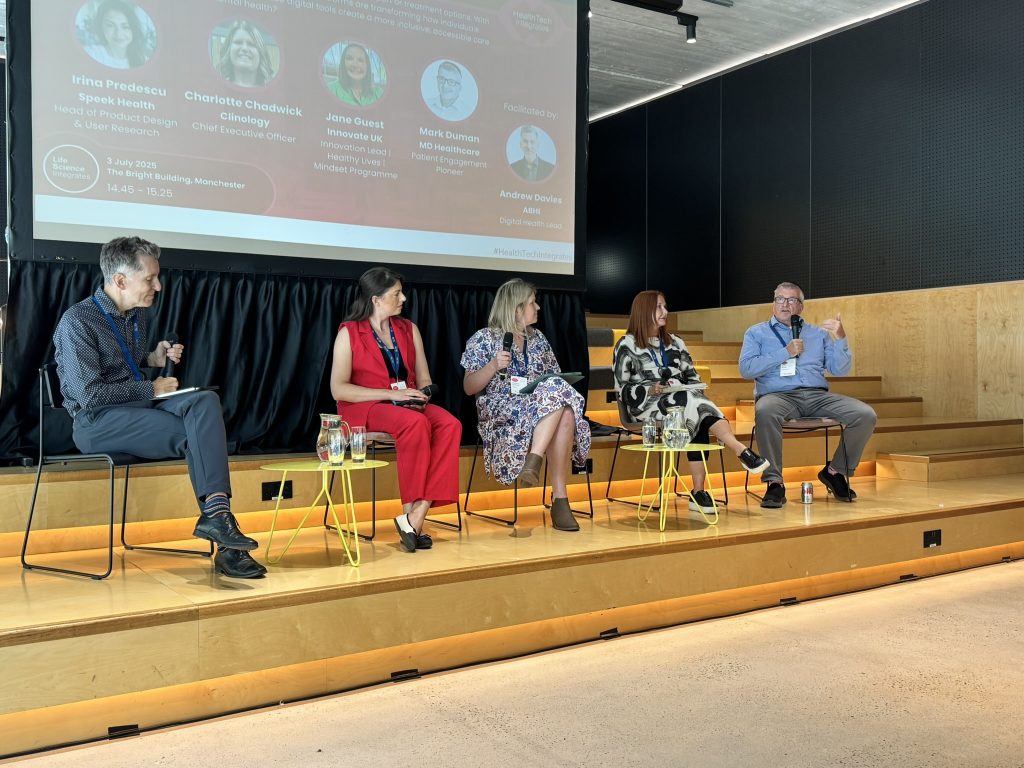
Digital therapeutics was another major area of discussion at the event, exploring how software-based interventions are opening new avenues in mental health, obesity, diabetes and beyond. Unlike wellness apps, these are evidence-based tools designed to be prescribed or integrated into formal care pathways. The consensus was that meaningful patient engagement can’t be an afterthought. Platforms must be co-created with users to ensure they are not only effective but also intuitive, respectful and genuinely helpful in moments of vulnerability.
“These platforms aren’t just another portal or app—they’re becoming part of someone’s life. If you don’t understand the emotional state people are in when they use them, you risk doing more harm than good.”
A critical piece of this puzzle is ensuring diversity in development and testing. Whether in menopause risk prediction models or digital mental health interventions for young people, inclusive design and robust validation across varied communities was highlighted as essential to building digital tools that work for all.
Alongside inclusion, there was a strong push for solutions that integrate seamlessly into NHS workflows. Clinicians need to see these platforms as trusted allies—relieving burden rather than adding it. That means aligning digital diagnostics with existing data flows and EHR systems, and designing digital therapeutics that slot into everyday practice, not creating parallel admin tracks.
Another thread running through the discussions at HealthTech Integrates 2025 was a shared conviction that this sector already holds the expertise, ingenuity and drive needed to lead the transformation. Against a backdrop of NHS urgency and system strain, there was a clear call for industry to step up and take ownership of change.
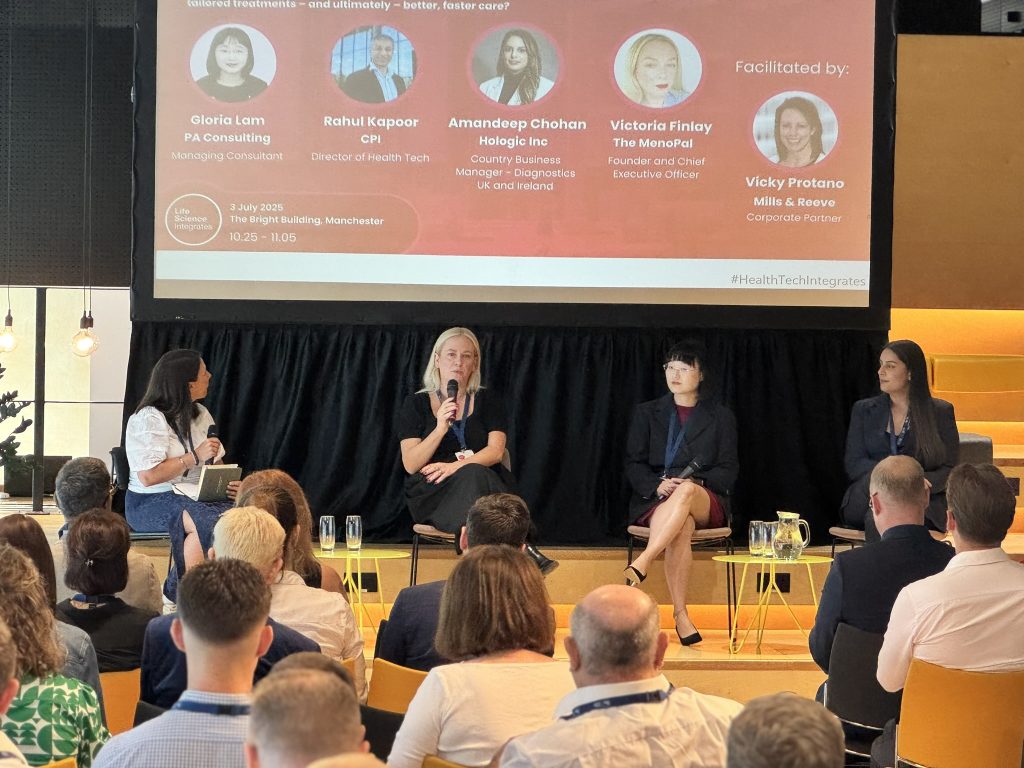
“In this room, we are the changemakers. We are the people who are going to make the difference. Adoption—whether it’s the public, clinicians, or government—means bringing those people together.”
It was a call not just for technological innovation, but for collective leadership and action: harnessing the best of academia, clinical insight and entrepreneurial agility to build a truly predictive, personalised and patient-driven health service.
Many at HealthTech Integrates 2025 spoke candidly about a funding environment that remains cautious. For all the investor appetite around AI, remote monitoring and personalised care platforms, expectations are still often shaped by faster-moving software markets—where timelines are measured in months, not years.
There was clear consensus that building meaningful health solutions requires investors who understand the long game. This is particularly true for companies navigating regulated environments or undertaking rigorous clinical validation. Panellists stressed the importance of patient capital and partners willing to back ventures through longer, bumpier journeys in return for more durable impact.
“Three years ago, I didn’t even know what patient capital was. Now I see it’s absolutely essential. If you’re looking for quick payback, HealthTech probably isn’t for you.”
Beyond equity, many highlighted the value of blending grant funding, angel investment and strategic non-dilutive support to keep early-stage ventures moving. Government-backed schemes like the NHS Clinical Entrepreneur Programme, Innovate Uk’s Biomedical Catalyst and the Mindset XR Initiative were flagged as crucial bridges, particularly for digital therapeutics and diagnostics.
Practical tips also surfaced on preparing for investor conversations. Getting HMRC pre-approval for SEIS or EIS schemes can give early-stage companies a critical edge by assuring investors they’ll qualify for tax relief, helping to de-risk the proposition.

“It’s about having a realistic funding path. You’re very lucky if you put money in and it works first time. Most of the time, it doesn’t. That means mapping milestones properly and going early on the next raise.”
Defining a clear problem—and proving it’s one that truly needs solving—was another recurring theme. Too many startups arrive with a solution looking for a problem, or without enough evidence to show the scale and urgency of their chosen challenge. Investors urged founders to sharpen their articulation of market need, total addressable opportunity and competitive positioning.
Underpinning all this was a pragmatic optimism. HealthTech funding may be more complex and slower than other propositions, but there was broad agreement it offers profound societal value. The trick is educating investors and founders alike on what realistic success looks like—and building funding models that reward long-term outcomes.
A highlight of HealthTech Integrates 2025 was the dedicated pitching session, which brought together a dynamic mix of startups and scale-ups to showcase the next wave of HealthTech innovation. From AI-driven mental health tools to cutting-edge oncology devices, the range on display underscored both the sector’s creativity and its resolve to tackle entrenched challenges.
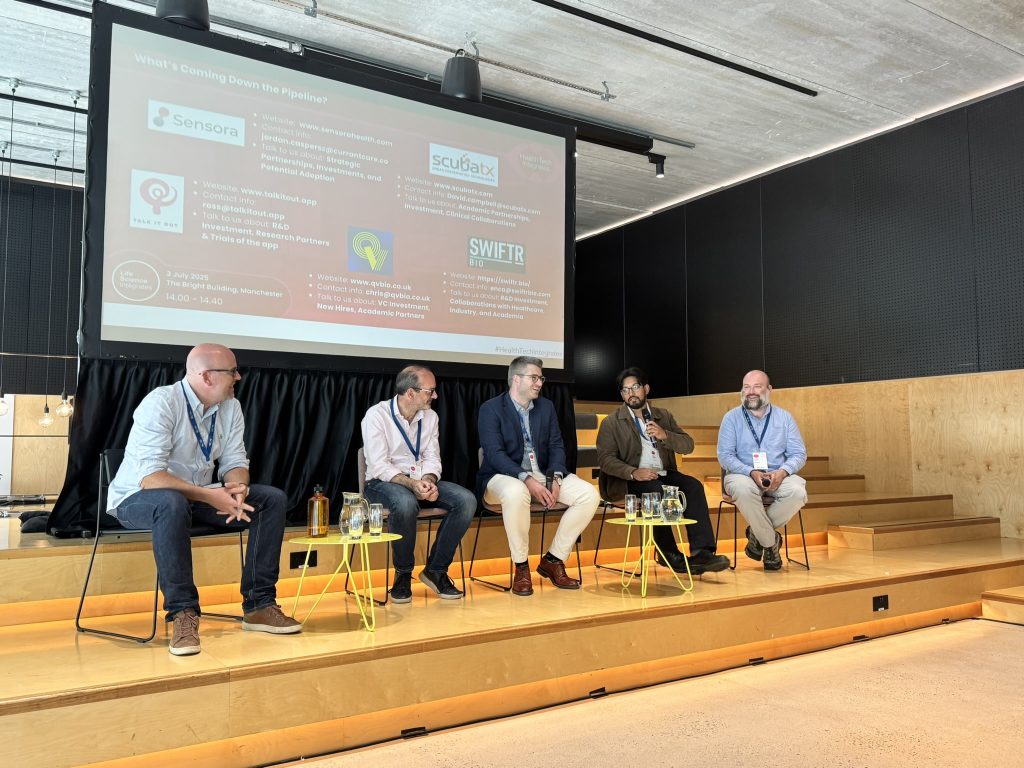
Currant Care showcased its Sensoria platform, which uses around 75 behavioural data points to help care homes monitor elderly residents more precisely. Already delivering efficiency gains of about 15%, the system is evolving to integrate smart toilets, mats and biometrics—all aimed at easing caregiver burden while improving quality of care.
Mental health was another focal point. Talk It Out showcased an app that uses voice analysis to surface subconscious stress and anxiety triggers. Tested with an NHS trust, it cut user anxiety by 37% in just 10 days, pointing to how AI might support both individual wellbeing and workforce productivity.
QV Bioelectronics unveiled a novel implantable device for treating glioblastoma, designed to deliver tumour-treating fields 24/7 from inside the brain. This could dramatically improve survival rates compared to current external cap systems, while sparing patients from burdensome daily treatments.
Another exciting innovation came from ScubaTx, who introduced a next-generation organ transporter that combines precise temperature control with oxygen perfusion, moving far beyond the ice boxes still used for most organ transfers today. With transplant demand consistently outstripping supply, the technology could help make more donated organs viable, improving uptake and outcomes.
Meanwhile, SWIFTR Bio presented its CRISPR-based biosensing platform, which brings molecular-level sensitivity to point-of-care testing in under 30 minutes. With plans to target STIs and antimicrobial resistance, the technology is designed to be rapid, modular and equipment-free.
“Sweat the details on the problem you’re trying to solve, not just the solution you’re trying to build. In healthcare, that’s where the real opportunity lies.”
The pitches left no doubt that UK innovators are tackling critical gaps across the health system. The challenge, echoed throughout the day, is ensuring these breakthroughs find the support and partnerships needed to scale here in the UK—not just pilot, then grow elsewhere.
A clear message across every discussion at HealthTech Integrates 2025 was that no single player, be it the NHS, startups, academia or big industry, can drive meaningful change alone. True progress relies on building collaborative frameworks that share risk, align incentives and keep patients at the centre.
Speakers highlighted the pitfalls of fragmented pilots and “passenger partnerships” that look good on paper but fail to deliver in practice. Instead, success stories pointed to tight, trust-based relationships where all parties are invested in outcomes, not just headlines. Having clinicians and end-users engaged early is crucial, both to shape design and to build the buy-in needed for adoption.
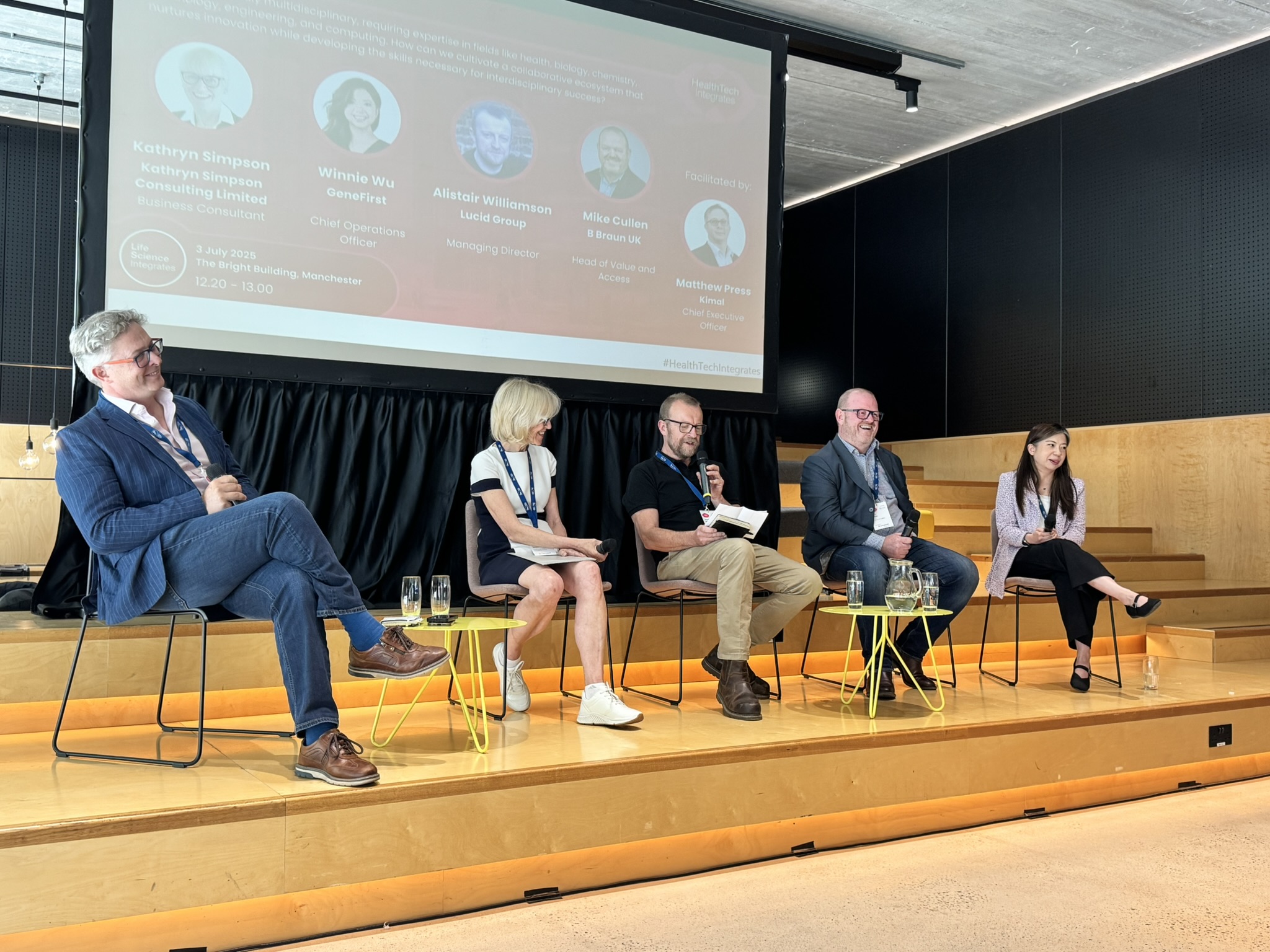
“When you’re leading change in this complex, chaotic world, you have to solve problems differently. It’s not enough to bring in experts working in isolation. Now we need to harness diversity—across geographies, disciplines, functions—and bring everyone together to collaborate and innovate.”
Several also stressed the importance of clarity around IP, data sharing and commercial terms from the outset—not as an afterthought once a technical milestone is reached. Ultimately, collaboration is what turns smart ideas into system-wide solutions.
If there was one takeaway from HealthTech Integrates 2025, it’s that the stakes for getting this right have never been higher. The NHS’s new 10-year plan doesn’t just acknowledge the scale of the challenge — it sets out an explicit call for prevention-first, digitally enabled, community-rooted care. But translating that ambition into reality will take more than strategy documents.
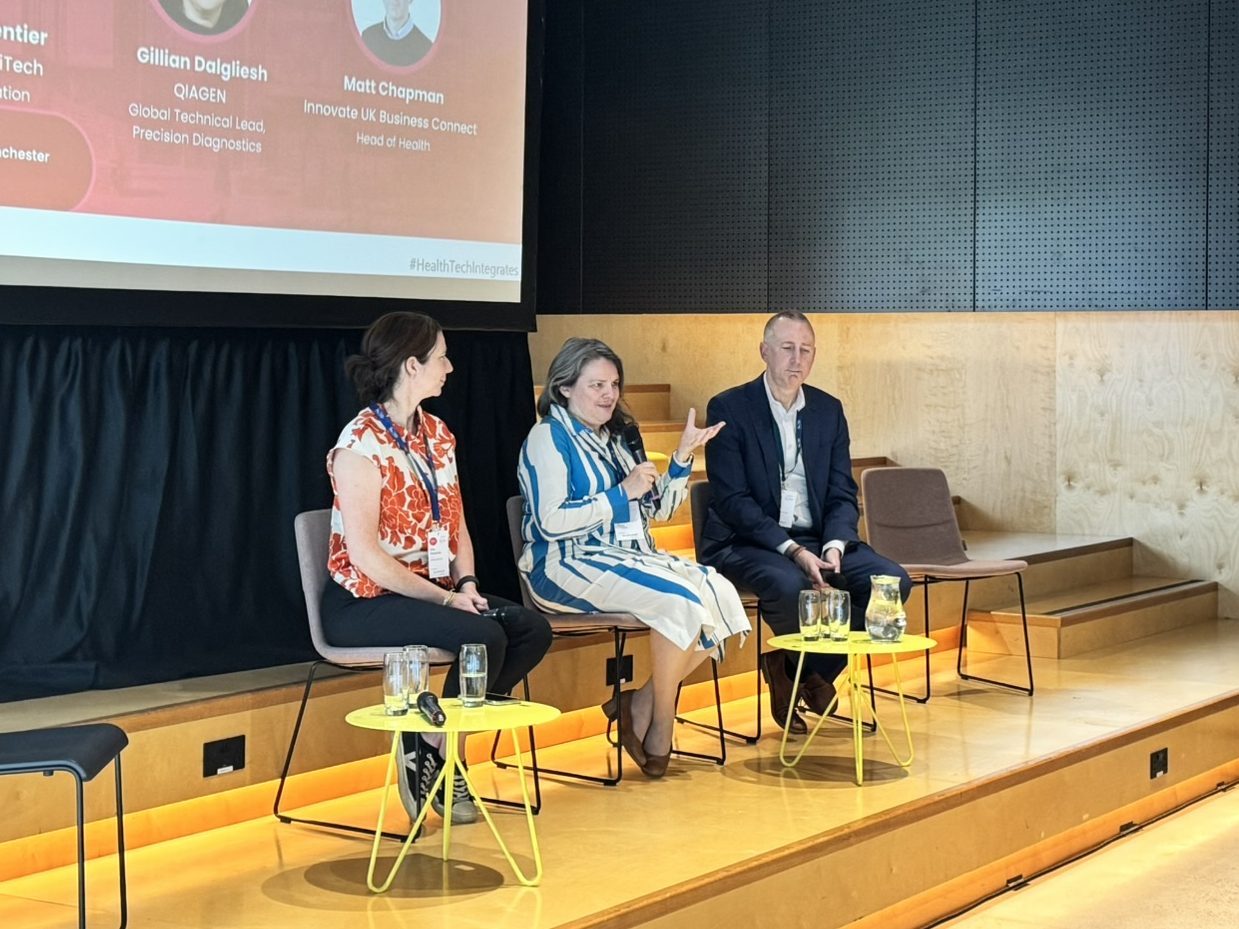
There’s a sense that the UK now holds many of the right ingredients: a thriving innovation ecosystem, deep clinical expertise, rich health data, and investors increasingly alive to healthtech’s long-term value. The question is how quickly these can be woven together into robust pathways that support scaling, adoption and better patient outcomes.
That means building trust, fostering genuine multi-stakeholder partnerships, and designing funding and regulatory models that reward patience and rigour over fast exits. Above all, it means keeping patients at the heart of every decision—not as an afterthought, but as active co-creators in reshaping care.
Because in the end, innovation alone won’t save the NHS. But combined with the right funding streams, collaboration and the courage to rethink old models, it just might.
